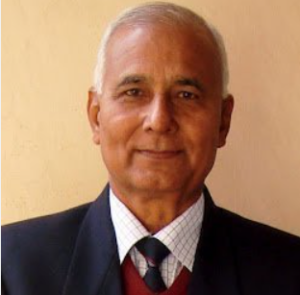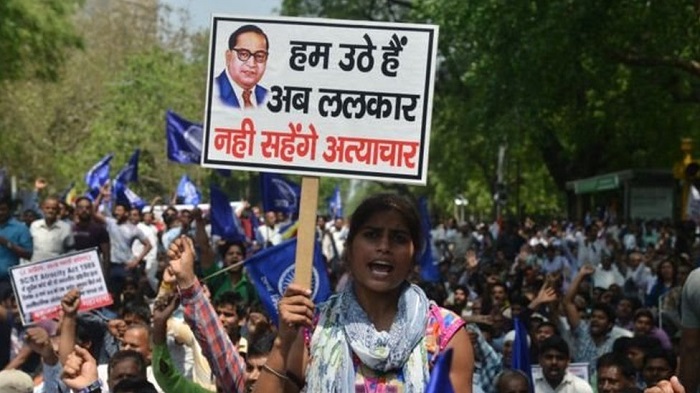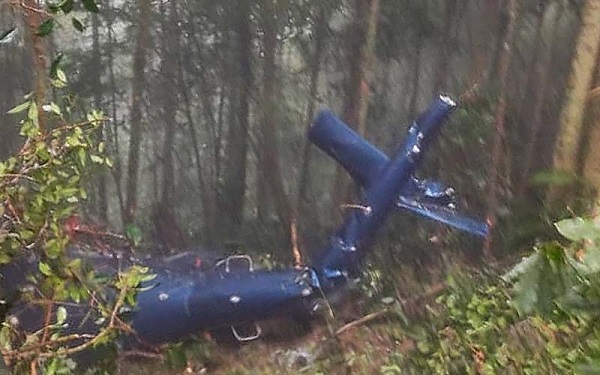S.R. Darapuri, National President, All India Peoples Front
(Asian independent)

Why Dalits Face Atrocities in India
Dalits, historically known as “untouchables,” occupy the lowest rung of India’s caste hierarchy, rooted in ancient Hindu social structures. Despite constitutional protections, they face systemic discrimination and violence due to:
- Deep-Rooted Caste Prejudice:
– Caste-based discrimination persists in social, economic, and cultural spheres, with upper-caste communities often viewing Dalits as inferior. This manifests in exclusion, humiliation, and violence.
– Practices like untouchability, though outlawed, continue in rural and semi-urban areas, fueling atrocities such as physical assaults, sexual violence, and social boycotts.
- Economic Marginalization:
– Dalits often work in low-paying, stigmatized jobs (e.g., manual scavenging, agricultural labor), making them vulnerable to exploitation by dominant castes who control resources and land.
– Economic dependency and lack of land ownership exacerbate their powerlessness, leaving them susceptible to violence when asserting rights.
- Resistance to Social Change:
– Dalit assertions for equality—through education, political participation, or inter-caste marriages—often provoke backlash from dominant castes seeking to maintain traditional hierarchies.
– Atrocities, like honor killings or mob violence, are used to suppress Dalit empowerment.
- Cultural and Religious Justifications:
– Some traditional beliefs and practices reinforce caste hierarchies, subtly justifying discrimination. This cultural inertia perpetuates anti-Dalit sentiment, especially in rural areas.
- Political Exploitation:
– Dalits are sometimes used as vote banks, but political parties may fail to address their systemic issues, leaving them vulnerable to violence during caste-based conflicts or elections.
Role of Administration in Dealing with Atrocities
The Indian administration has legal and institutional mechanisms to address atrocities against Dalits, but implementation gaps persist. Key aspects include:
- Legal Framework:
– Scheduled Castes and Scheduled Tribes (Prevention of Atrocities) Act, 1989 (PoA Act): This law criminalizes caste-based violence, untouchability, and discrimination, with provisions for strict punishment and victim compensation.
– Constitutional Safeguards: Articles 15, 17, and 46 prohibit discrimination, abolish untouchability, and promote the welfare of marginalized groups.
– Special Courts: Designated courts expedite trials under the PoA Act, though delays are common.
- 2. Police and Law Enforcement:
– Police are mandated to register First Information Reports (FIRs) promptly under the PoA Act and investigate caste-based crimes.
– Challenges:
– Bias among police personnel, often from dominant castes, leads to refusal to register FIRs, shoddy investigations, or pressure on victims to withdraw cases.
– Low conviction rates (around 25-30% under the PoA Act, per NCRB data) due to weak evidence collection and judicial delays undermine deterrence.
- Administrative Measures:
– District Vigilance and Monitoring Committees: These bodies, headed by district magistrates, oversee the implementation of the PoA Act and review atrocity cases.
– Relief and Rehabilitation: The PoA Act mandates immediate financial aid, medical support, and protection for victims, but disbursal is often delayed.
– Reservation Policies: Affirmative action in education and government jobs aims to uplift Dalits, reducing their vulnerability to exploitation.
- Government Schemes:
– Programs like the **Post-Matric Scholarship Scheme**, **Ambedkar Village Development Programme**, and skill development initiatives aim to economically empower Dalits, though outreach and impact vary.
Challenges in Administrative Response
– Caste Bias in Institutions: Police, judiciary, and local officials may harbor caste prejudices, leading to leniency toward perpetrators or victim-blaming.
– Political Interference: Dominant caste groups often wield political influence, pressuring authorities to dilute cases or protect offenders.
– Lack of Awareness: Many Dalits, especially in rural areas, are unaware of their legal rights or fear retaliation when seeking justice.
– Underreporting: National Crime Records Bureau (NCRB) data (e.g., 50,291 cases under PoA Act in 2022) likely underestimates atrocities due to social stigma and administrative apathy.
– Resource Constraints: Overburdened police, inadequate staffing in special courts, and limited funding for victim support hinder effective implementation.
How to Prevent Atrocities Against Dalits
Preventing atrocities requires a multi-pronged approach combining legal enforcement, social reform, and economic empowerment:
- Strengthen Legal Implementation:
– Sensitize Police and Judiciary: Mandatory training on caste dynamics and the PoA Act to eliminate bias and ensure FIR registration and thorough investigations.
– Fast-Track Justice: Increase the number of special courts and set strict timelines for trials to improve conviction rates and deter offenders.
– Strengthen PoA Act: Amend the Act to address loopholes, such as vague definitions of offenses or delays in compensation.
- Economic Empowerment:
– Land Reforms: Redistribute land to landless Dalits to reduce economic dependency on dominant castes.
– Skill Development: Expand vocational training and entrepreneurship programs tailored for Dalit youth to break occupational stereotypes.
– Access to Credit: Provide microfinance and subsidies to Dalit-owned businesses to foster self-reliance.
- Social Awareness and Education:
– Anti-Caste Campaigns: Use media, schools, and community programs to challenge caste prejudices and promote social equality.
– Incorporate Caste History in Education: Teach about caste oppression and Dalit contributions in school curricula to foster empathy and awareness.
– Engage Religious Leaders: Encourage progressive interpretations of religious texts to counter caste justifications.
- Community Empowerment:
– Support Dalit Organizations: Fund and amplify Dalit-led NGOs and movements to advocate for rights and monitor atrocities.
– Safe Spaces: Establish community centres for Dalits to access legal aid, counselling, and skill training without fear of discrimination.
- Administrative Accountability:
– Monitor Implementation: Regular audits of PoA Act enforcement and public reporting of case outcomes to ensure transparency.
– Penalize Negligence: Hold police and officials accountable for failing to register cases or delaying investigations.
– Decentralized Grievance Redressal: Set up helplines and local complaint cells to make reporting accessible and safe for Dalits.
- Political and Social Inclusion:
– Encourage Inter-Caste Interactions: Promote inter-caste marriages and community events to break social barriers, with legal protection for participants.
– Strengthen Political Representation: Ensure Dalit voices in policymaking through active participation beyond reserved seats.
- Leverage Technology:
– Digital Reporting Platforms: Create apps or portals for anonymous reporting of atrocities, linked to police and NGOs.
– Data Analytics: Use AI to map atrocity-prone areas and deploy preventive measures like increased patrolling or awareness drives.
Conclusion
Atrocities against Dalits stem from entrenched caste hierarchies, economic disparities, and resistance to social change. While the Indian administration has robust laws like the PoA Act, implementation is hampered by bias, political interference, and resource constraints. Prevention requires a holistic approach: rigorous law enforcement, economic upliftment, social awareness, and administrative accountability. By addressing both systemic inequalities and immediate violations, India can move toward a more equitable society where Dalits live free from fear and discrimination.
Courtesy: Grok








